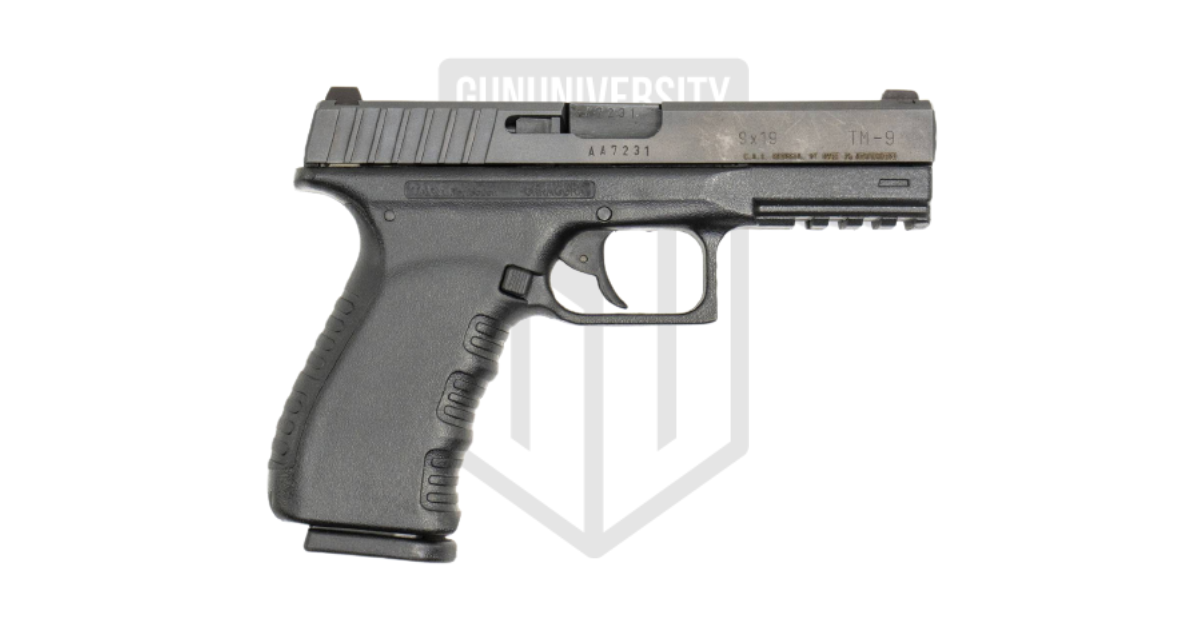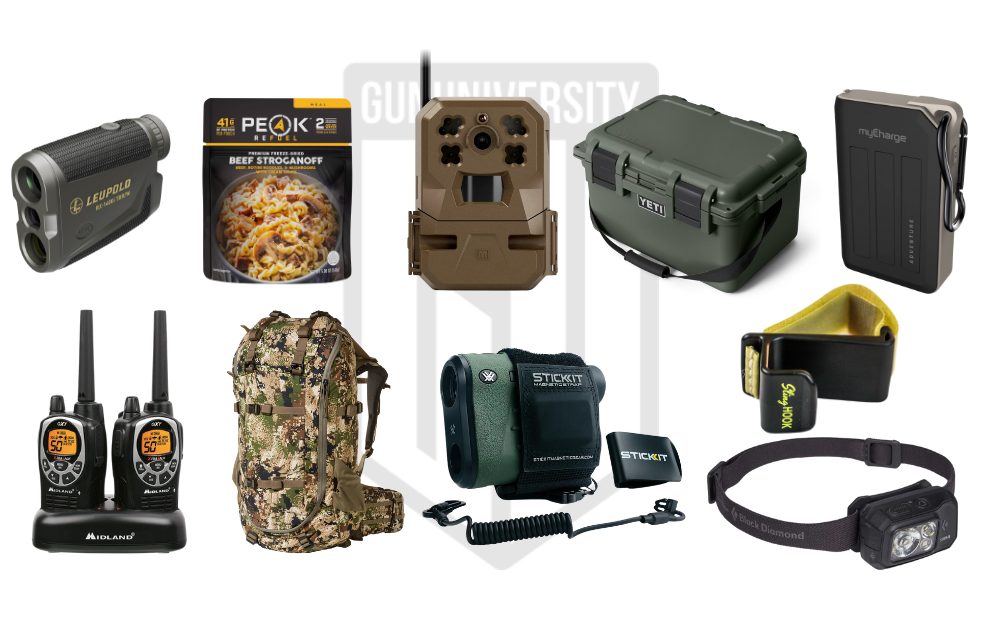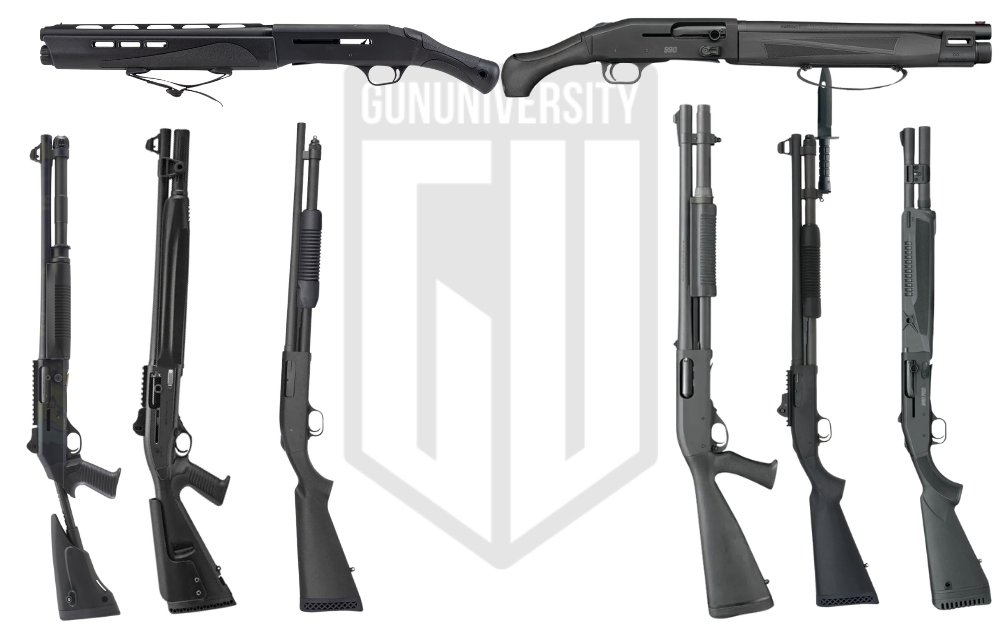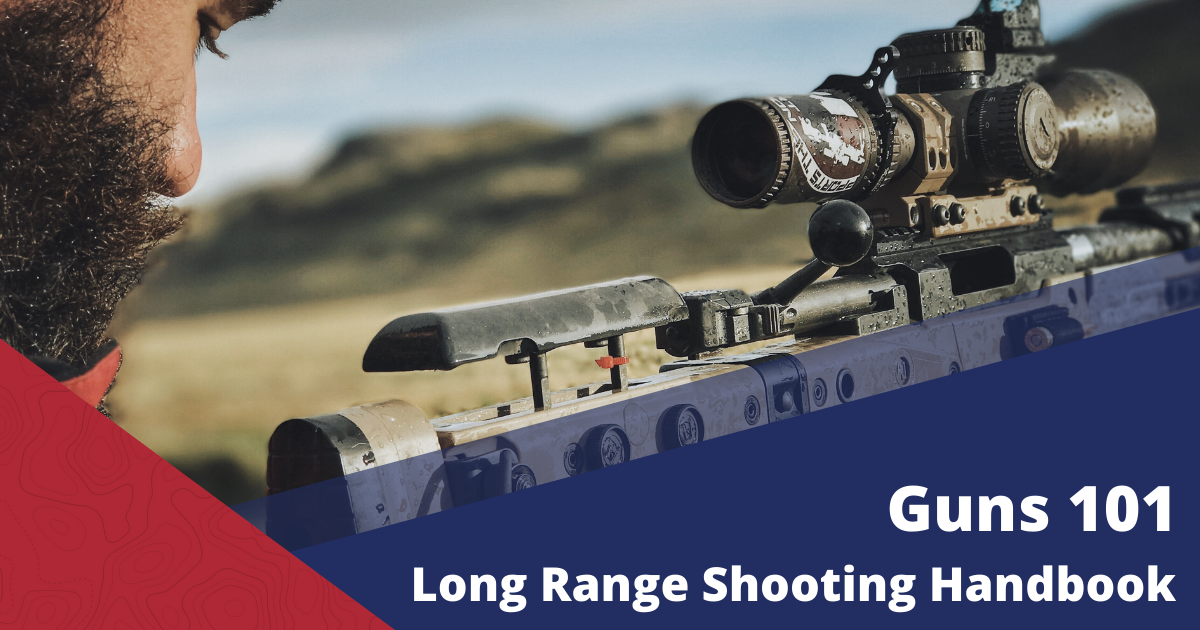7mm Rem Mag vs 30-06 Springfield Mag: Ammo Comparison
The 7mm Remington Magnum and 30-06 Springfield are two similarly sized cartridges, largely used by hunters. We designate one as a magnum while the other is not, so on the surface it might seem as though these are two wildly dissimilar cartridges. However, they’re close enough to make a comparison fascinating—and fun. Learn more by checking out this 7mm vs. 30-06 Springfield face off.
7mm Remington Magnum vs. 30-06 Springfield Specifications
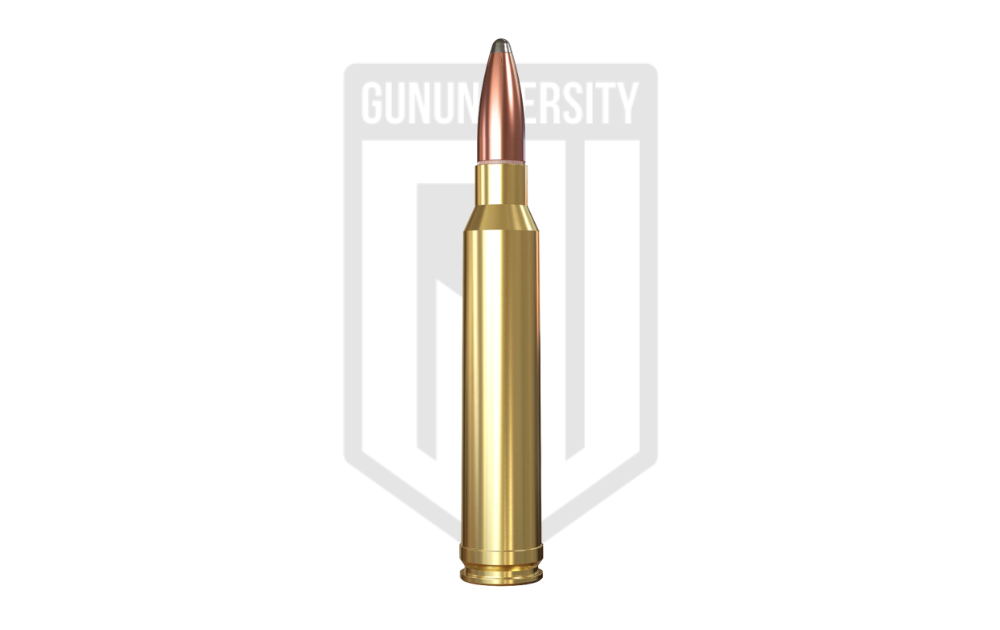
7mm Remington Magnum
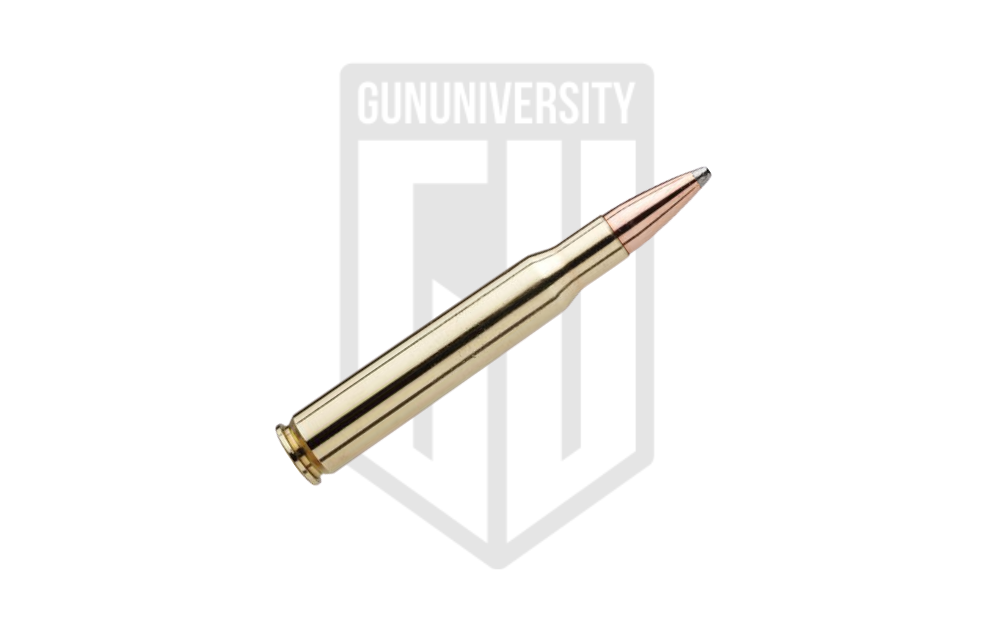
.30-06 Springfield
Why compare 7mm Remington Magnum vs. 30-06 Springfield?
As you can see in the specifications chart, the 7mm Remington Magnum and 30-06 Springfield have some things in common. Not only is their case length nearly identical, but their overall length is quite close as well. And, according to SAAMI, the maximum pressure of the two is within 1000 psi of each other. Does the magnum designation of the 7mm Remington Magnum make it automatically better than 30-06 Springfield, or is it the other way around?
Neither cartridge is the most popular on the market anymore, but they each have a devoted following. After all, there’s something to be said for a longtime, tried-and-true chambering. Both 7mm Remington Magnum and 30-06 Springfield are usually found in bolt-action rifles, so if you’re a fan of bolts, you’ve probably handled one or both at some point. The question remains, which one is a ballistic winner?
It’s the cartridge vs. cartridge face-off: 7mm Remington Magnum vs. 30-06 Springfield.
7mm Remington Magnum Review
Big game hunters especially favor this cartridge, but it is also utilized by others, including deer hunters and target shooters. It’s a bit more difficult to find on gun store shelves than other cartridges, but that doesn’t mean it doesn’t have its uses and fans. Over the years the 7mm Remington Magnum has been used to take all manner of predators and big game, and it will probably continue to do so for years to come. Those who know, know.
7mm Rem Mag History and Purpose
The 7mm Remington Magnum was, as its name suggests, designed by Remington. Its parent case is the 375 H&H Magnum, which—like the 7mm—is a belted magnum cartridge. Remington designed it at a time when belted magnums were enjoying consistent popularity, and when they launched the 7mm Remington Magnum in 1962, it managed to dethrone some others.
While Remington designed the cartridge, credit must be given to outfitter and writer Les Bowman for his part in its creation. Bowman had access to rugged country where elk lived, but he needed a cartridge his hunters could use. There were already magnums on the market for that purpose, but he found people weren’t happy with their felt recoil. And if he encouraged the use of lighter-recoiling rifles, the trajectory and overall performance on target just wasn’t there. After a lot of trial and error, this lead to Bowman’s wildcat cartridge called the 280 Remington Magnum. Hitting fast forward, this eventually lead to Bowman meeting with Remington and—after they initially said no—Remington ending up adopting and producing it as the 7mm Remington Magnum.
The 7mm Remington Magnum had technically already proven itself on big game thanks to Les Bowman. It didn’t take long to catch on as a commercial load, and it soon became a favorite of dangerous game hunters, among others. One modern issue with the cartridge comes down not to its performance but to its availability. It can be a harder round to find in stock, but if it can be located, it’s well worth it.
Pros and Cons of 7mm Remington Magnum vs. 30-06 Springfield
- Recoil – 7mm Remington Magnum delivers magnum benefits with felt recoil similar to that of 30-06 Springfield.
- Effective Range – 7mm Remington Magnum has a greater effective range on game animals than 30-06 Springfield.
- Availability – The 7mm Remington Magnum ammo is harder to find than 30-06 Springfield.
- Bullet Diameter – 7mm Remington Magnum has a smaller diameter bullet than 30-06 Springfield.
Best Ammo for 7mm Remington Magnum
There are some fantastic options available for this cartridge. These are our picks for 7mm Remington Magnum:
Hunting Ammo

Barnes VOR-TX 7mm Remington Magnum 140 Gr Polymer Tipped Spitzer Boat Tail.
Marketplace |
Cost Per Round |
| Gun Deals | $1.99 |
| Firearms Depot | $2.46 |
| Guns.com | $2.79 |
Long Range Hunting
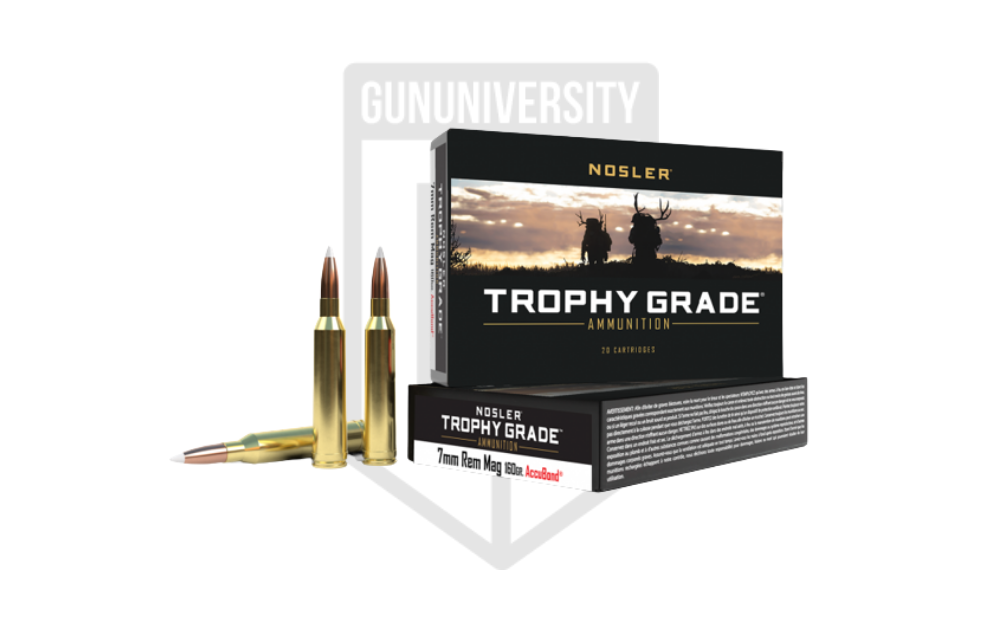
Nosler Trophy Grade 7mm Rem Mag160 Gr AccuBond
Marketplace |
Cost Per Round |
| Gun Deals | $2.99 |
Target Ammo
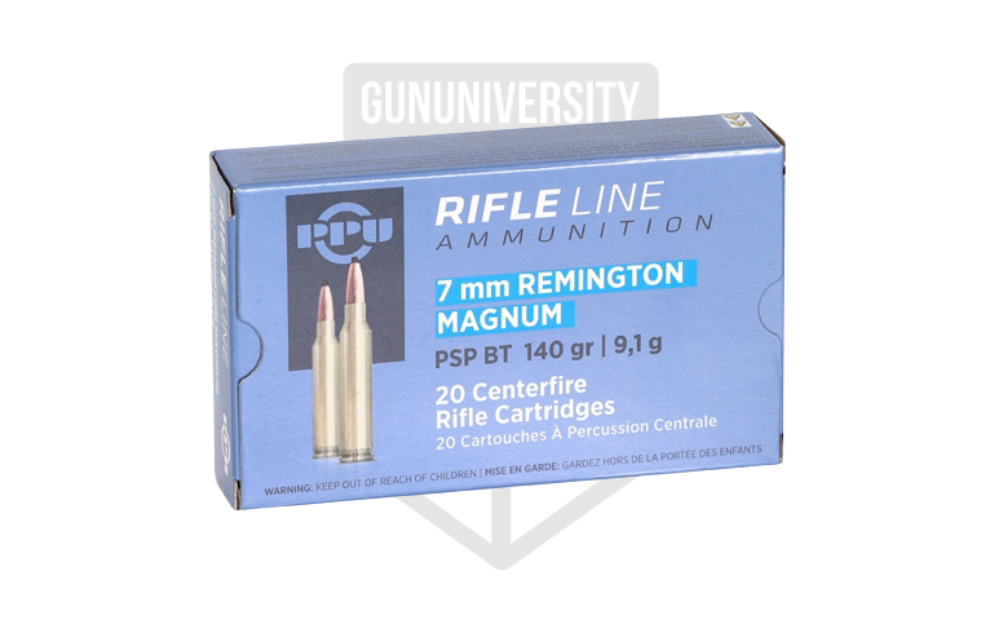
Prvi Partizan 7mm Remington Magnum 140 grain Pointed Soft Point
Marketplace |
Cost Per Round |
| Gun Deals | $1.13 |
| Target Sports USA | $1.30 |
| Firearms Depot | $1.35 |
| Guns.com | $1.49 |
30-06 Springfield Review
With more than a century of consistent production and use backing it, there’s simply no arguing 30-06 Springfield’s success. It’s mostly used by hunters and is specifically chambered in bolt-action and lever-action rifles. Since it has been around for a long time, there’s a fairly wide selection of ammunition offered for it. The 30-06 Springfield is a hard-working cartridge capable of taking a wide variety of predators and game animals, but what’s the story behind its creation?
30-06 Springfield History and Purpose
In the early 1900s, the military was still using the 30-03 Springfield. When they decided it was time for a cartridge capable of greater velocity. Additionally, they desired a lighter weight, easier to maneuver platform. That lead to the creation of the 30-06 Springfield, meaning yes, its parent case is the 30-03 Springfield. 30-06 became the replacement for the 30-03 in 1906 and continued being used by the military into the 1970s. That’s when the AR platform took over, rendering the use of bolt-actions as standard issue rifles obsolete.
When it was newly created, the cartridge was designated as “cartridge, ball, caliber .30, Model of 1906” which was later shortened to M1906. Eventually they moved on to calling it 30-06 Springfield, and that’s the designation that stuck. The first rifles chambered in it were the existing M1903 Springfield rifles used by the military, which involved some gunsmithing. Before long, they built rifles specifically for it. Other guns chambered in 30-06 Springfield included the M1917 Enfield, M1 Garand, and BAR (Browning Automatic Rifle).
Although it’s no longer the military’s favorite, 30-06 Springfield gained enough popularity among hunters to stay relevant. For years they considered it the one cartridge capable of taking any game in North America, making it a truly versatile option. Who doesn’t want one rifle that can pretty much do it all? Today it’s still used by some hunters and sometimes also used for brush or truck guns.
Pros and Cons of 30-06 Springfield vs 7mm Rem Mag
- Availability – 30-06 Springfield ammo is more readily available than 7mm Remington Magnum.
- Close Range Performance – 30-06 Springfield is fantastic at close range on game animals.
- Bullet Size – 30-06 Springfield has a larger bullet diameter than 7mm Remington Magnum.
- Velocity – The 30-06 Springfield loses velocity more quickly than 7mm Remington Magnum.
- Range – The 30-06 Springfield doesn’t have as great an effective range as 7mm Remington Magnum.
Best Ammo for 30-06 Springfield
30-06 has been around for a long time, and there are a lot of good options out there for it that are most likely going to be easier to find than 7mm Rem Mag:
Match Ammo
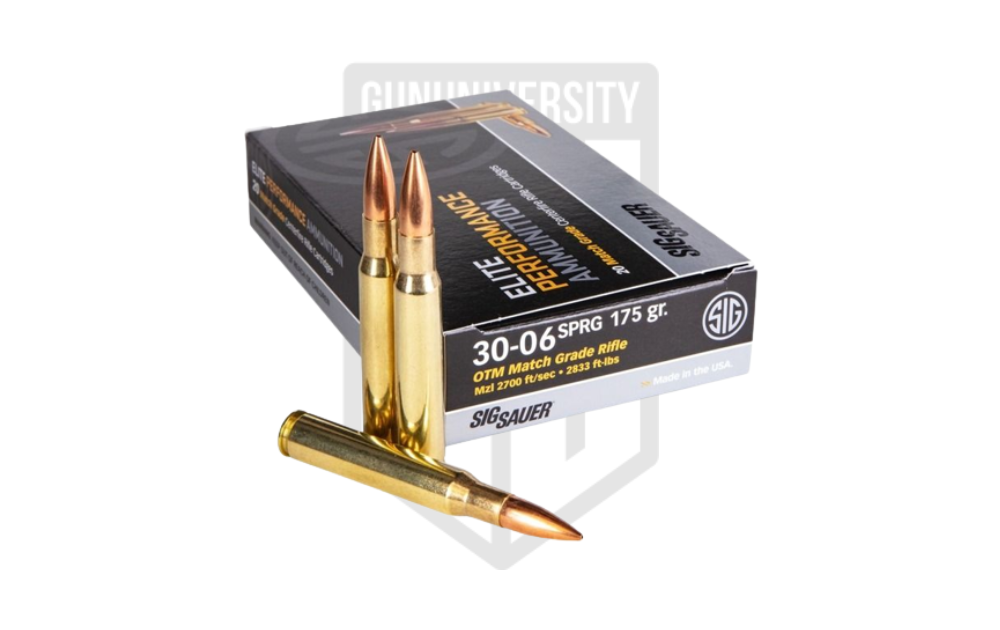
SIG Sauer Elite Performance 30-06 Springfield 175 grain OTM
Marketplace |
Cost Per Round |
| Gun Deals | $1.55 |
| Gritr Sports | $1.59 |
| Guns.com | $2.04 |
Practice Ammo
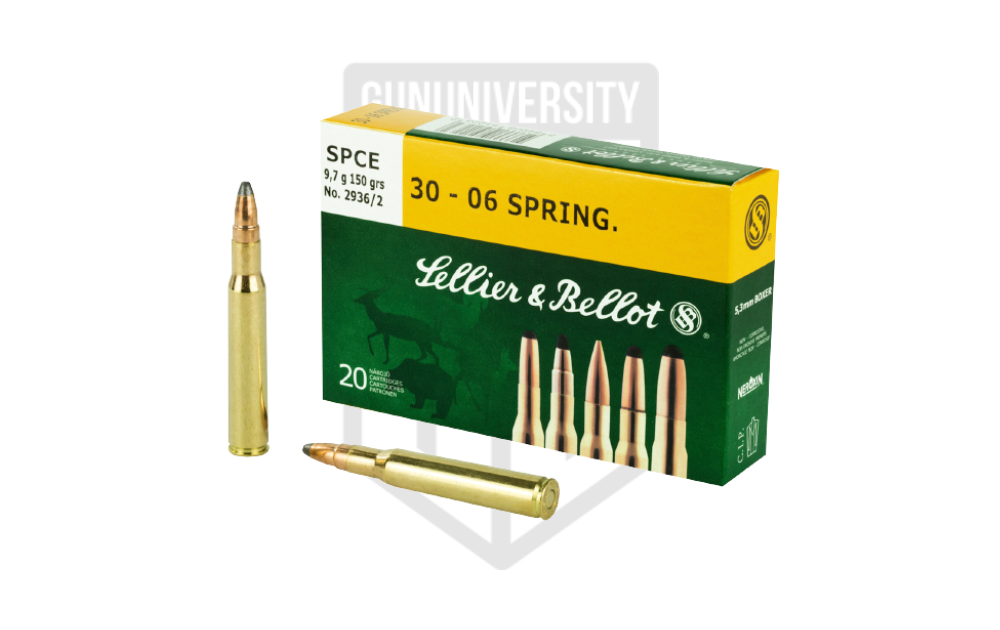
Sellier & Bellot 30-06 Springfield 150 grain FMJ
Marketplace |
Cost Per Round |
| Gun Deals | $1.05 |
| Palmetto State Armory | $1.25 |
Hunting Ammo
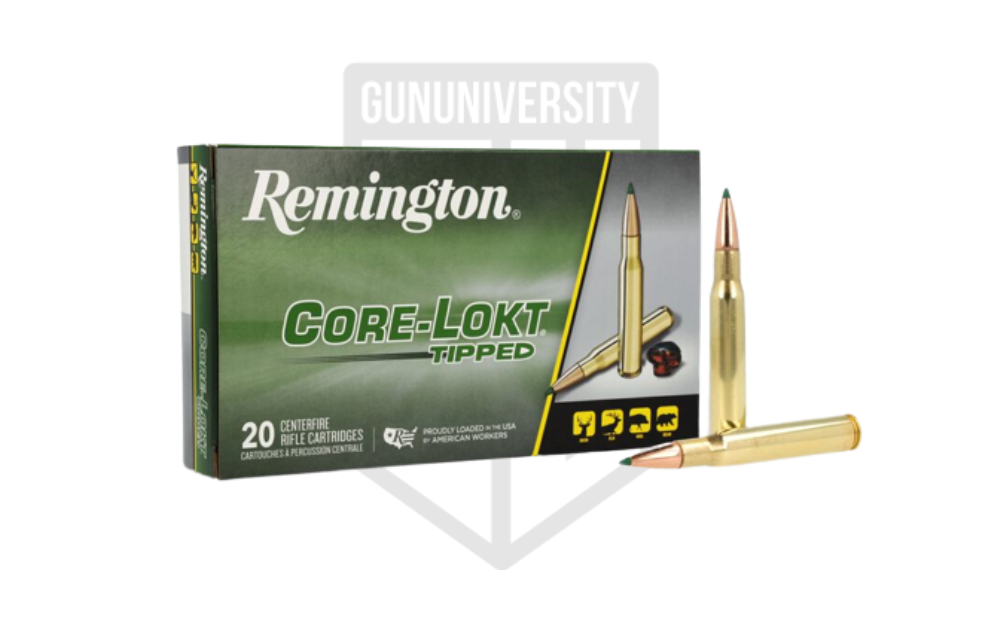
emington Core-Lokt 30-06 Springfield 165 grain Polymer Tipped
Marketplace |
Cost Per Round |
| Gun Deals | $1.44 |
| Gritr Sports | $1.46 |
| Firearms Depot | $1.79 |
Ballistics Comparison: 7mm Remington Magnum vs. 30-06 Springfield
Offhand, you might expect 7mm Remington Magnum to automatically outdo 30-06 Springfield, if for no other reason than it being a designated magnum. However, the two cartridges have very close maximum pressures listed by SAAMI and the bullet of the 7mm Remington Magnum is smaller than the 30-06 Springfield’s bullet. Let’s find out which cartridge comes out on top by comparing the ballistics of a few loads.
To compare cartridges beyond 100 yards, we’re going to take a look at a few different loads. First, let’s consider Nosler Trophy Grade 7mm Remington Magnum 160 grain AccuBond with a ballistic coefficient of 0.531 against Remington Core-Lokt 30-06 Springfield 165 grain Polymer Tipped with a ballistic coefficient of 0.447.
| Distance (yards) | Nosler Trophy Grade 7mm Remington Magnum 160 grain AccuBond Velocity (fps) | Nosler Trophy Grade 7mm Remington Magnum 160 grain AccuBond Energy (ft-lbs) | Remington Core-Lokt 30-06 Springfield 165 grain Polymer Tipped Velocity (fps) | Remington Core-Lokt 30-06 Springfield 165 grain Polymer Tipped Energy (ft-lbs) |
|---|---|---|---|---|
| 0 | 3000 | 3197 | 2820 | 2913 |
| 100 | 2818 | 2820 | 2616 | 2507 |
| 200 | 2643 | 2481 | 2421 | 2147 |
| 300 | 2474 | 2175 | 2234 | 1829 |
| 400 | 2312 | 1899 | 2056 | 1549 |
| 500 | 2156 | 1651 | 1886 | 1303 |
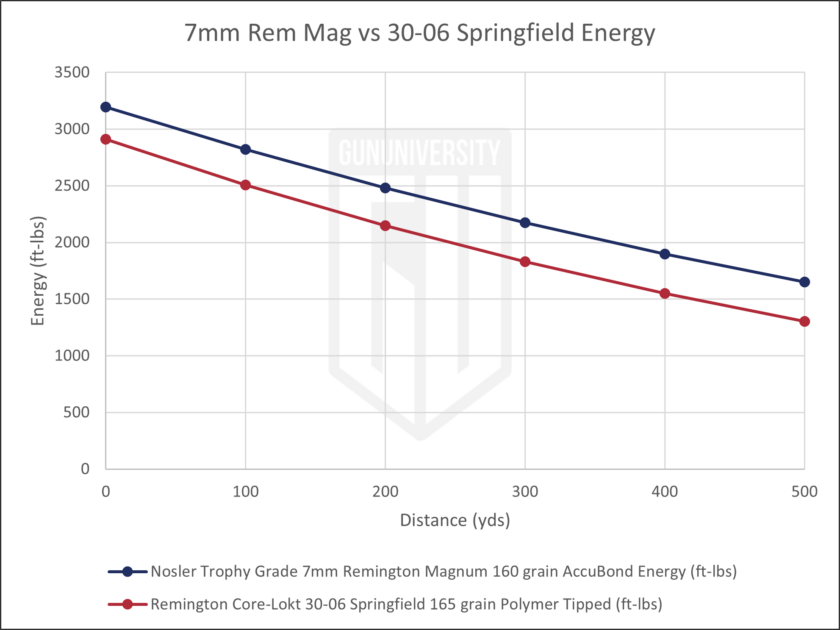
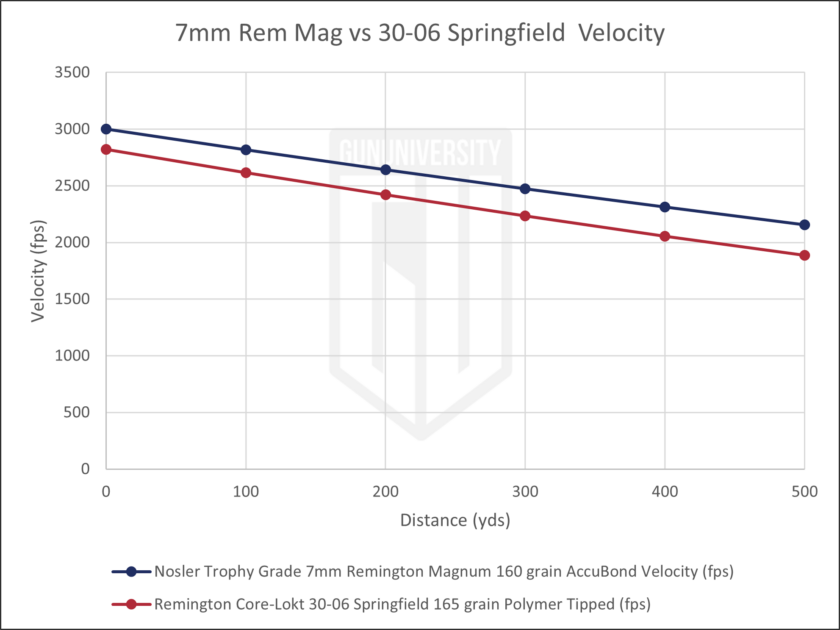
The comparison of this Nosler 7mm Remington Magnum load to the Remington Core-Lokt 30-06 Springfield load shows some obvious gaps in performance. Although the velocity of the two cartridges doesn’t vary enormously, those couple hundred feet per second do count. And when it comes to energy, the 7mm Remington Magnum outpaces the 30-06 Springfield by quite a bit. Based on this chart alone, 7mm Remington Magnum is the clear ballistic winner.
If we change over to different loads and compare Barnes VOR-TX 7mm Remington Magnum 140 grain Polymer Tipped Spitzer Boat Tail with a ballistic coefficient of 0.412 and Sellier & Bellot 30-06 Springfield 150 grain FMJ with a ballistic coefficient of 0.290, what happens?
| Distance (yards) | Barnes VOR-TX 7mm Remington Magnum 140 grain Polymer Tipped Spitzer Boat Tail Velocity (fps) | Barnes VOR-TX 7mm Remington Magnum 140 grain Polymer Tipped Spitzer Boat Tail Energy (ft-lbs) | Sellier & Bellot 30-06 Springfield 150 grain FMJ Velocity (fps) | Sellier & Bellot 30-06 Springfield 150 grain FMJ Energy (ft-lbs) |
|---|---|---|---|---|
| 0 | 3100 | 2988 | 2953 | 2905 |
| 100 | 2865 | 2552 | 2634 | 2311 |
| 200 | 2643 | 2171 | 2336 | 1818 |
| 300 | 2431 | 1837 | 2058 | 1411 |
| 400 | 2229 | 1544 | 1801 | 1080 |
| 500 | 2036 | 1289 | 1568 | 819 |
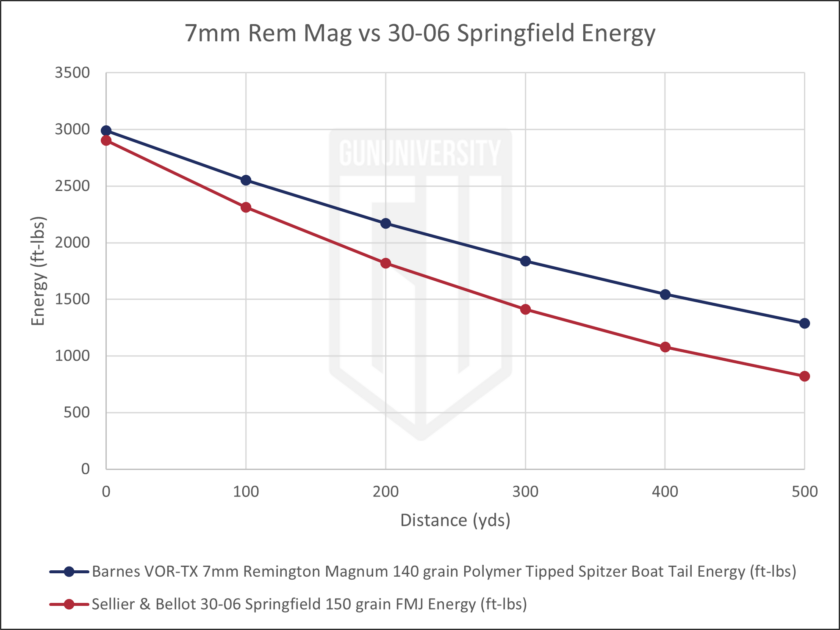
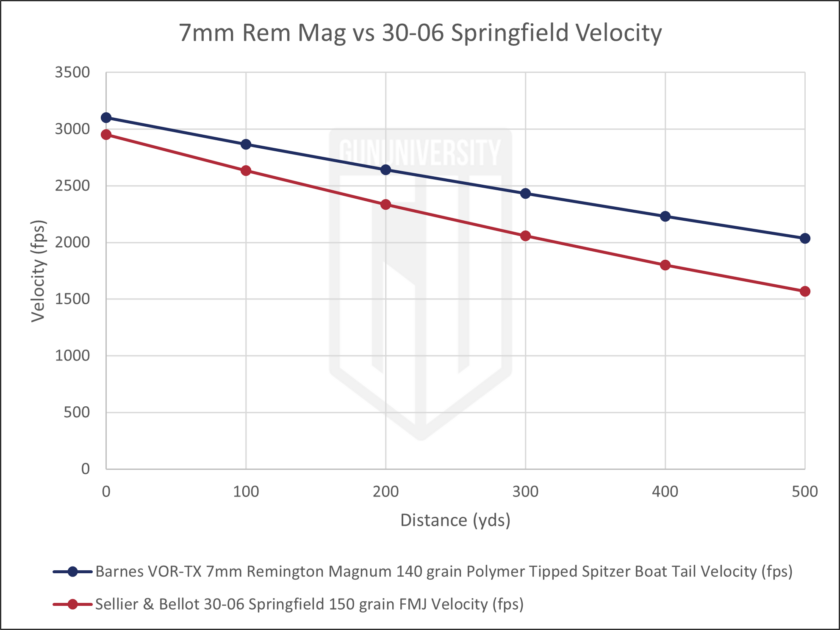
In this comparison, the two cartridges begin with relatively close muzzle velocity and energy. By 100 yards, 7mm Remington Magnum has the lead for both velocity and energy, and by 500 yards that gap has widened. According to this chart, the 7mm Remington Magnum produces more impressive ballistics, but what about drop and drift?
| Distance (yards) | Barnes VOR-TX 7mm Remington Magnum 140 grain Polymer Tipped Spitzer Boat Tail Drop (inches) | Barnes VOR-TX 7mm Remington Magnum 140 grain Polymer Tipped Spitzer Boat Tail Wind Drift (inches) | Sellier & Bellot 30-06 Springfield 150 grain FMJ Drop (inches) | Sellier & Bellot 30-06 Springfield 150 grain FMJ Drift (inches) |
|---|---|---|---|---|
| 0 | -1.50 | 0.03 | -1.50 | 0.03 |
| 100 | -0.01 | 0.72 | 0.00 | 1.09 |
| 200 | -2.76 | 2.88 | -3.54 | 4.50 |
| 300 | -10.51 | 6.68 | -13.49 | 8.87 |
| 400 | -24.16 | 12.34 | -31.71 | 20.27 |
| 500 | -44.84 | 20.10 | -60.72 | 33.84 |

At 100 yards it might appear as though the 7mm Remington Magnum is going to drop more quickly than the 30-06 Springfield, but that’s not what happens. Despite the bullets being similar weights, the 7mm Remington Magnum maintains a significantly flatter trajectory than the 30-06 Springfield. Overall, this looks like a ballistic win for the 7mm Remington Magnum.
Our Take – 7mm Remington Magnum vs 30-06 Springfield
Ballistically, the 7mm Remington Magnum is clearly the superior cartridge. It shoots flatter and delivers more energy than 30-06 Springfield, and these are important features for a long-range hunting round. When you’re hunting, you should be working to make an ethical, single-shot kill, and that means using the best tool for the job. In this case, that’s the 7mm Remington Magnum.
If you’re not taking longer shots on game, it’s possible you might prefer the 30-06 Springfield due in part to the fact that it’s usually easier to find that ammo. Availability of ammo is absolutely a factor when selecting firearms, so be sure to take that into consideration before making your final decision.
If you think 30-06 is the winner and want to see our favorite 30-06 rifles, read our article on the topic.
Recent Posts
November 29, 2025
November 25, 2025
November 22, 2025
November 21, 2025

